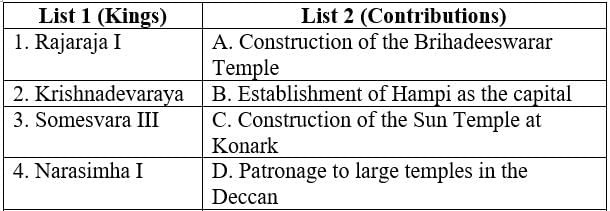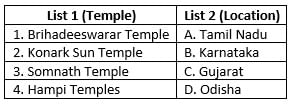History: CUET Mock Test - 4 - CUET MCQ
30 Questions MCQ Test - History: CUET Mock Test - 4
Ventures of which of the following traders were risky but highly profitable?
In context with the Mahajanpadas, consider the following statements:
1. The Buddhist text "Anguttara Nikaya" mentioned the names of 16 Mahajanpadas at the time of the Buddha
2. The Magadha was first ever mentioned in Atharvaveda.
3. Society in the Magadha empire was liberal in nature.
Which of the statements given above is/are correct?
1. The Buddhist text "Anguttara Nikaya" mentioned the names of 16 Mahajanpadas at the time of the Buddha
2. The Magadha was first ever mentioned in Atharvaveda.
3. Society in the Magadha empire was liberal in nature.
Which of the statements given above is/are correct?
The decline of the Nandas at the hands of Kautilya and Chandragupta Maurya has been vividly portrayed in the Sanskrit play
What aspect of early Indian society is highlighted in the Mahabharata?
Which character from the Mahabharata symbolizes the challenges faced by women in ancient India?
Which literary work provides valuable insights into kinship and caste in early Indian society?
What does the story of the Pandavas and Kauravas primarily depict?
What was the primary goal of Siddhartha Gautama’s quest?
Match the kings with their contributions to temple building

Match the dynasties with their achievements in temple building

If noncooperation were effectively carried out, India would win what within a year?
Which of the following was one of the occupations of Kshatriyas?
The land grant to the Santhals stipulated that at least how much of the area was to be cleared and cultivated within the first.
The Constituent Assembly was formed to give shape to the dreams of those who had struggled for what goal?
Which of the following statements is incorrect regarding the Partition of India?






















